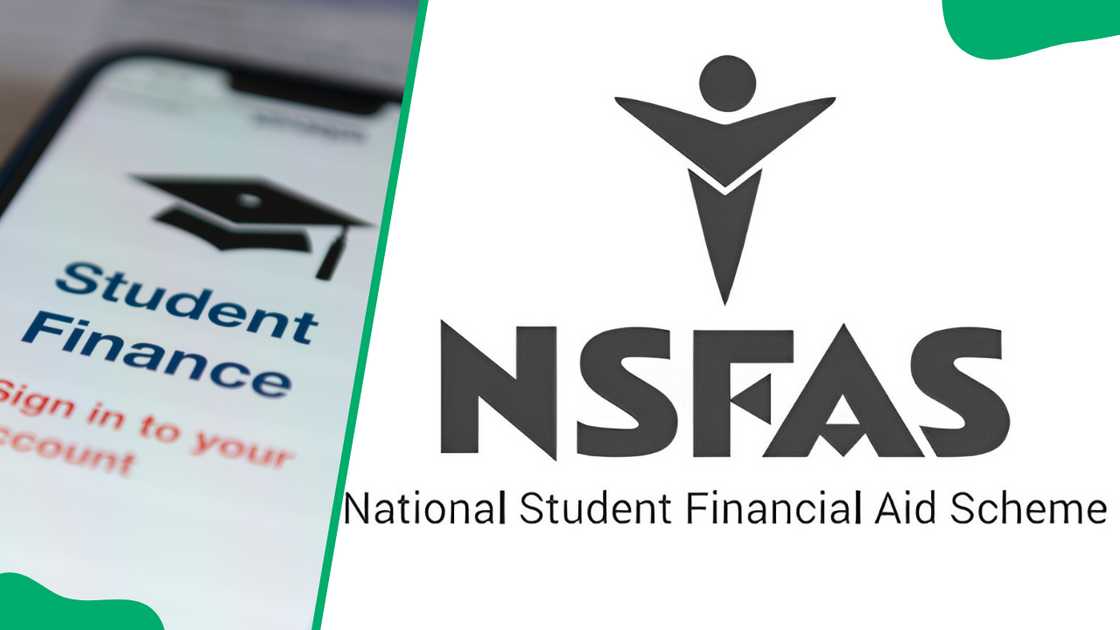How to reapply for NSFAS: All you need to know about re-registering
Reapplying to the National Student Financial Aid Scheme (NSFAS) ensures a smooth continuation of your college or university funding. Whether you are a returning student or your initial application was unsuccessful, it is crucial to understand the process to secure financial support. This article provides a detailed guide on how to reapply for NSFAS.

Source: UGC
TABLE OF CONTENTS
When reapplying for NSFAS, you should be aware of the eligibility requirements and any updates. NSFAS regularly makes changes to their system to curb the increasing cases of fraud and scamming. Scammers often target students to gain access to their allowance using tactics like fake websites, dodgy links in social media, or posing are officials.
How to reapply for NSFAS
To register again for the National Student Financial Aid Scheme, follow the steps below;
- Step 1: Go to the NSFAS student portal here
- Step 2: Click on the myNSFAS tab found
- Step 3: Select the 'Register' button
- Step 4: Check the box that appears
- Step 5: Provide your ID number
- Step 6: Fill in your official names as per your ID
- Step 7: Provide your email address, then confirm it
- Step 8: Provide your mobile number. NSFAS will contact you through it, so ensure it is accurate.
- Step 9: You will be prompted to create a password. Ensure it is unique.
- Step 10: You will then be required to upload a copy of your Identity Document.
- Step 11: Click on 'Register'.
- Step 12: An OTP will be sent to your mobile number and email address. Type it in the box that appears on your screen.
- Step 13: Select the Submit button to complete the re-registration process.

Source: UGC
Why should you re-apply for NSFAS?
Students may need to reapply for NSFAS funding for several reasons, as highlighted;
- If a student's initial application was not approved, they can reapply if they still need funding and meet the eligibility criteria.
- Students moving from a TVET college to a university, or vice versa, need to reapply for funding.
- If a student completes a certificate qualification and wants to pursue an undergraduate degree, they must reapply.
- Students who deregister or drop out during an academic term and wish to resume their studies in future terms must reapply.
What are the NSFAS requirements for re-registration?
To qualify for funding, one must meet the following NSFAS eligibility criteria;
- One must be a South African citizen or permanent resident.
- The combined gross household income should not be more than R350,000 per year.
- For persons living with disabilities, the combined gross household income should not be more than R600,000 per year.
- SASSA beneficiaries automatically qualify on financial eligibility.
- One must have a functioning email address and cell phone number.
- You must be a registered student at a South African public university or TVET college.

Source: Getty Images
NSFAS documents needed for re-registration
The supporting documents needed for re-registration are the same as those required when you applied for the first time. The system usually generates a list of the NSFAS documents to upload, which may include the following;
- A copy of your ID
- Copy of your birth certificate
- Both sides of your smart card
- A signed and completed consent form
- ID copies of your parent/s, guardian, or spouse (where applicable)
- Proof of income of parent, guardian or spouse (You can provide a pay slip or appointment letter). If you are self-sufficient, you should provide personal proof of income.
- If you have a disability, you will need to provide a completed and signed Disability Annexure A form.
- If you are an orphan, you should provide a completed and signed Declaration Form.
- An applicant who has indicated that they have no family member details and or abridged birth certificate must complete the Declaration: Non-SASSA.
- You may also provide a retrenchment letter / UIF documentation, a death certificate/s, and a divorce decree if applicable.

Source: UGC
FAQs
The National Student Financial Aid Scheme provides financial assistance to hundreds of thousands of students from the country's 26 public universities and 50 TVET colleges. Below are some of the frequently asked questions regarding the scheme;
How to apply for NSFAS when you already have an account
If you already have an account, follow these steps to apply for funding;
- Visit the NSFAS website, then click on the myNSFAS tab
- Enter your ID number and password to log in.
- Once logged in, click on the Apply button.
- Fill in the necessary personal information. Ensure the details are up-to-date and accurate.
- Upload supporting documents where applicable.
- Submit your application.
Can NSFAS fund you twice?
The financial aid scheme cannot fund you twice for the same qualification. A student can only be funded for one qualification at one institution at any one time.

Source: Getty Images
Can you apply for NSFAS twice?
You can apply to the financial aid scheme more than once. If your first application was rejected, you are allowed to reapply as long as you meet the eligibility criteria. You are also allowed to apply again if you previously received funding from the scheme.
Can you restart your NSFAS application and apply again?
The scheme allows students to restart their applications and reapply. Not that students who have already obtained a prior university qualification do not qualify for another funding. Also, students who have completed TVET N6 qualifications cannot be funded at a TVET college again but can be financed at a university.
Do NSFAS documents need to be certified?
Your documents do not need to be certified. The National Student Financial Aid Scheme removed this requirement during the Covid-19 pandemic.
How do you delete your NSFAS account and start a new one?
A student can cancel their NSFAS account by submitting a request to the scheme at their offices or via email. Once the profile has been deleted, you can create a new one and apply for funding.

Source: Getty Images
The above guide on how to reapply for NSFAS is straightforward. Remember to stay informed about deadlines and maintain your academic performance to keep your funding secure.
READ ALSO: How to check if you are blacklisted in SA: A comprehensive guide
Briefly.co.za shared all you need to know about being blacklisted in South Africa. Blacklisting means that you have a poor credit score after defaulting on your loan.
Blacklisting usually has a negative consequence on your financial future. If you have a red flag on your credit report, no lender will want to extend financial help, or they will do so at high interest rates. Keep reading for more on how to check your credit score, including ways to clear your name.
Source: Briefly News

